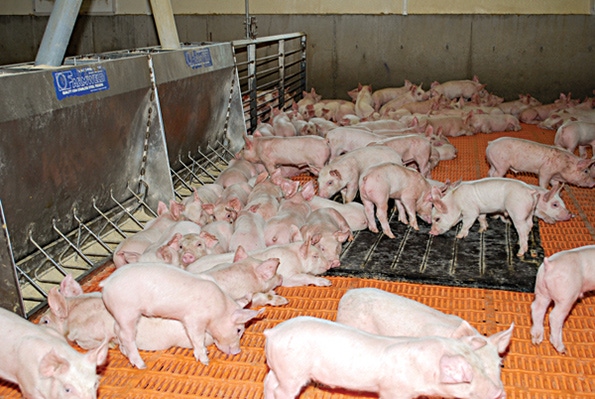Livestock feed database is a vital tool to aid producers in making cost-effective production decisions, animal welfare policies and procedures, and to guarantee the safety and nutritional value of consumers’ food.
August 10, 2016

Twenty-one land-grant institutions and partner organizations are collaborating to provide researchers, Extension professionals, regulators, feed industries and producers with up-to-date, research-based information on the nutrient needs of agricultural animals.
Since forming in 2010, the National Animal Nutrition Program has created a database of animal feed ingredients. The database is a vital tool to inform cost-effective production decisions, animal welfare policies and procedures, and to guarantee the safety and nutritional value of consumers’ food.
Participating universities |
“Feed is the largest livestock and poultry production expense, and better information on animal nutritional needs and feeding strategies is key to making livestock production sustainable and effective,” says Merlin Lindemann, project leader from University of Kentucky.
Activities conducted by the program aid in the development of feeding strategies and research to enhance animal health, which allows for better productivity and lowered costs. Consumers will also benefit from safer, more nutritious meat, dairy and eggs.
“The significance of this data is vast,” says Phil Miller, project participant from the University of Nebraska. “It shows how we can use the byproducts from biofuel grain production in animal feed more economically. It also reveals how modified animal diets can reduce the emissions from livestock that contribute to global warming.”
So far, the program has collected and sorted 1.5 million feed ingredient records to create a reliable database that is used by organizations in over 30 countries, including the United Nations Food and Agriculture Organization.
The National Animal Nutrition Program is a National Research Support Project supported by the Agricultural Experiment Stations with funds administered by the USDA’s National Institute of Food and Agriculture. The feed database is only one of many accomplishments of the NANP since its inception in 2010. Click here for more information, or to speak with a member of the program’s staff.
You May Also Like


